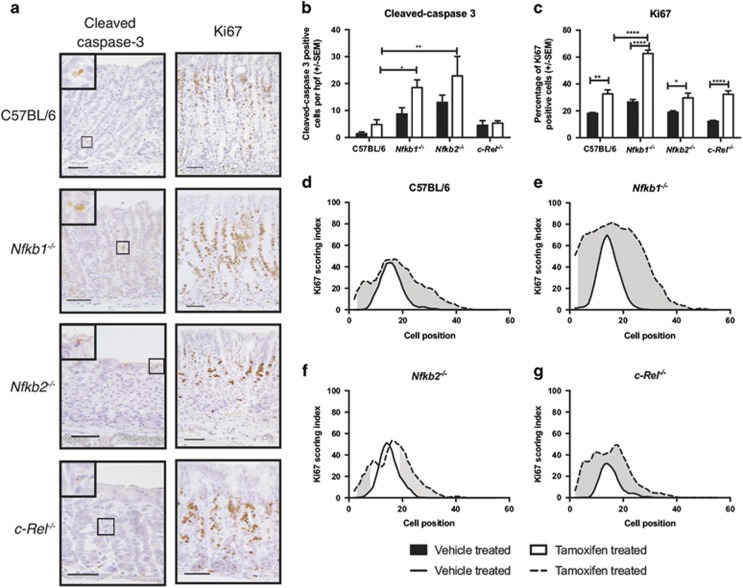Figure 3.
Gastric corpus epithelial cell turnover following tamoxifen administration in WT, Nfkb1−/−, Nfkb2−/− and c-Rel−/− mice. (a) Representative photomicrographs of gastric corpus of WT, Nfkb1−/−, Nfkb2−/− and c-Rel−/− mice treated with 150 mg/kg tamoxifen. Sections immunostained for expression of cleaved caspase-3 or Ki67. Scale bars 100 μm. (b) Number of cleaved-caspase 3-positive cells identified per high-power field in mice treated with vehicle or 150 mg/kg tamoxifen. (c) Percentage of gastric corpus gland cells expressing Ki67 in mice treated with vehicle or 150 mg/kg tamoxifen. For panels (b and c), statistically significant differences tested by two-way ANOVA and Dunnett’s test. *P<0.05, **P<0.01, ****P<0.0001. (c–f) Ki67-positive cells plotted by cell position in the gastric corpus hemiglands of WT (d), Nfkb1−/− (e), Nfkb2−/−(f) and c-Rel−/−(g) mice. Solid line represents distribution of cells in vehicle-treated mice, broken line tamoxifen-treated mice. Shaded area marks region of gland where distribution of Ki67-positive cells differs significantly in tamoxifen-treated versus vehicle-treated mice, P<0.05 by modified median test. N=5 for all experimental groups

